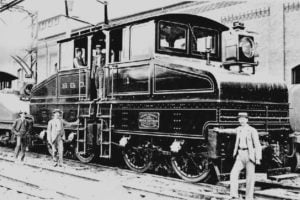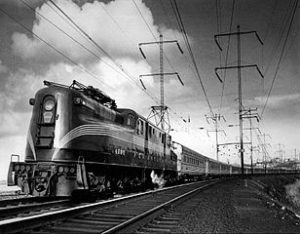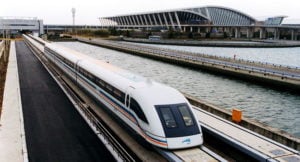Today’s biggest driver of air-pollutant emissions is transportation. And undergirding that is unabated population growth.
At this juncture, prior to entering a brand new year and a whole new decade, global warming and climate change still remain top-of-mind concerns and for good reason. That the attention being paid to the duo appears to be getting broader, most definitely there is something to be said for this.
And, as for how transportation will fare going forward, how the sector developed throughout its past as well as what the state of the realm is right now, could very well provide a clue as to where in the years and decades to come transport is headed.

Now, as it has to do with the sector’s dirtier, darker side – exhaust emissions, there was a moment in time where concerns about related impacts prompted power brokers of the day to take a hard look at the development path transport was on and from that determine what should be its direction from that point on. In the section below, provided is related perspective.
Where it all started
The Baltimore and Ohio Railroad was one of the pioneer subscribers of steam locomotive smoke abatement. This was evident in the city of Baltimore, Maryland in general, and in the Howard Street Tunnel beneath Howard Street, specifically.
The goal here was to reduce the amount of smoke from steam-locomotive-pulled trains inside the tunnel itself.

To answer the call, the railroad acquired and pressed into service in 1895 the first electric locomotive on any mainline track anywhere in the world – the first example of its kind and fittingly given the number: 1. Electrification inside the Howard Street Tunnel lasted a total of 57 years, that is, until the time that the diesel locomotive took over and filled in.
It was this early pioneering effort that laid the groundwork for future emissions abatement and reduction in transportation.
And, where it went
“Having trains pulled by a horse or a team of horses or letting gravity do the work, was a practical means to move trains along tracks, that is, until automation entered the picture. In that horses, cables and gravity were the very first ways railcars were moved, this means by which to do so constitutes the first generation of railway locomotion. Locomotion, incidentally, is defined, in effect, as the process of place-to-place moving.”
“Eventually, horse, cable and gravity control systems were supplemented with something else – steam power propulsion which never completely replaced the aforementioned. There were applications, in fact, where horse, cable and gravity operations remained intact. It all depended, of course, on what the application was. Nevertheless, steam power made its presence felt and, as such, is considered the second generation in railway locomotion.”

“Enter electricity and before too long a viable way was found to harness it. And what this meant was that a means would be found to power trains using this energy source. One of the earliest known cases of an electric vehicle of sorts operating on a railway track structure was in 1837. The vehicle’s inventor was Thomas Davenport of Vermont who, just two years earlier, patented an electric motor.”
“The practice of running trains under wire or parallel to an adjacent powered ‘third rail’ became the industry mainstay. Pantographs, placed atop electric locomotives or traction-motor-equipped passenger rail cars, meanwhile, are devices used to capture energy supplied to overhead electrical catenary, which through the pantograph, transfers that electrical impulse and when fed to traction motors placed under a locomotive frame on rotating bogies containing wheels or a so-equipped passenger rail car with the same, enables the attached driving wheels to turn. For third rail operation, the principle is the same only pickup from the energized third rail is achieved via a shoe that extends outward from the conveyance in question, contacts the electrical distribution line and voila; the trains move along the track. Trains that are electrically driven comprise generation three in railway locomotion techniques.”
“Although electric locomotives advanced the state of locomotive propulsion to new heights, it was the diesel-electric design that revolutionized the entire industry. Patented by German mechanical engineer Dr. Rudolf Diesel in 1892, the first successful test of a diesel locomotive occurred in 1897 in Augsburg, Germany. However, it would take another 28 years before a diesel would first be put to use on American rails.”

“Next – and last – in line is what is called ‘electromagnetic-induction propulsion.’ Joseph Henry – an American – in 1829, demonstrated its earliest forebear – electromagnetic propulsion.”

“The electromagnetic induction technique being referred to here goes by another name: Magnetic Levitation or maglev for short. Maglev can be considered locomotive propulsion’s fifth generation.”
(All quoted material above originally published in the ebook: The Departure Track: Railways of Tomorrow).*
Explored next time will be automotive propulsion’s history.
*Alan Kandel, The Departure Track: Railways of Tomorrow, “Chap. 1: Sect. 1.2: And Now, A Word (or Two) About Propulsion History,” 2013
Images: http://dig.library.vcu.edu/u?/postcard,182 1919 (top); https://web.archive.org/web/20080723164022/http://tardis.union.edu/community/project95/HOH/D.htm 1895 via Wikimedia Commons (second); Association of American Railroads (third); Alex Needham (bottom)
This post was last revised on Dec. 6, 2020 @ 7:25 a.m. Pacific Standard Time.
– Alan Kandel

Good article Professor